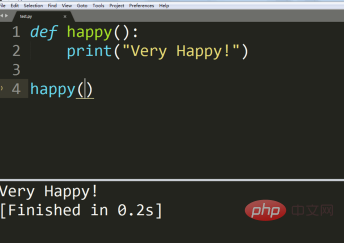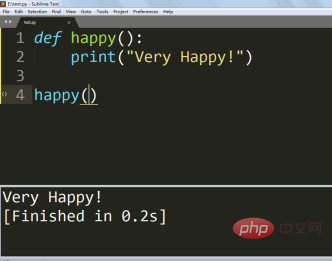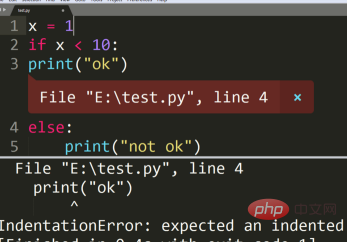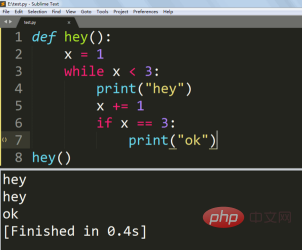Home > Article > Backend Development > What are the markers for statement blocks in python language?
There is no obvious statement block mark in python. Statement blocks are identified through indentation. Python is a cross-platform computer programming language; it is a high-level scripting language that combines interpretability, compilation, interactivity and object-oriented; it is mostly used for the development of independent, large-scale projects.

Python does not have obvious statement block markers, and statement blocks are identified through indentation.
Open the editor here and create a new py file as a demonstration.
def happy():
print("Very Happy!")
happy()When creating a function, you need to indent after the colon to mark the statement block.

x = 1
while x < 5:
print(x)
x += 1When using while, you need to indent after the colon to mark the statement block.

x = 1
if x < 10:
print("ok")
else:
print("not ok")When using if and else statements, they need to be indented after the colon to mark the statement block.

If you do not mark the statement block, an error will be reported.

def hey():
x = 1
while x < 3:
print("hey")
x += 1
if x == 3:
print("ok")
hey()After each colon, a statement block needs to be marked, and it must be marked layer by layer according to the format.

Recommended tutorial: "python tutorial"
The above is the detailed content of What are the markers for statement blocks in python language?. For more information, please follow other related articles on the PHP Chinese website!